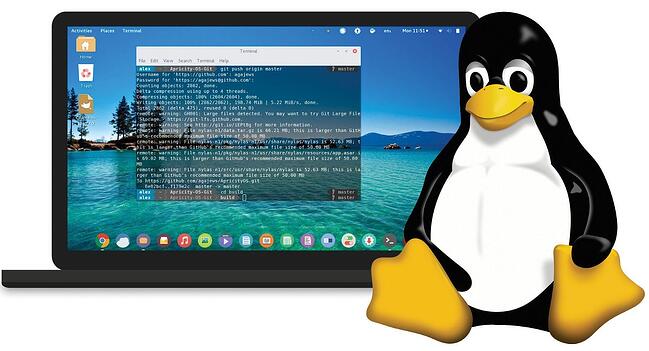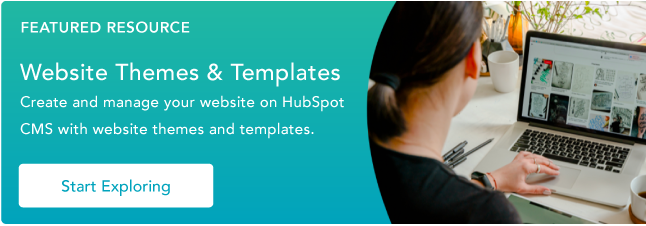There are all sorts of software programs on the market these days. Some are designed to make your life easier, while others are meant for more specific purposes. Sometimes it's difficult to know what software you'll need for your particular situation. For instance, you'll need design software if you're a graphic designer. And if you're just a regular person who likes to stay organized, you might want a program that helps you manage your finances or keep track of your appointments. To help you decide, we've compiled a list of some handy software.

Access hundreds of Website Themes & Templates on HubSpot
This blog post will look at ten different types of software and what they can do for you. Whether you're looking for something to increase productivity or just want to learn more about something new, this post is for you! Let's start by defining software.
Table of Contents
10. Adobe Photoshop & Illustrator
What is software?
In the most general sense, software is a set of instructions that tell a computer what to do. These instructions can be anything from a simple game to a complex operating system. We can divide software types into two categories: system software and application software.
System Software
System software is what makes the computer itself work. It includes the operating system, the most important type of system software, and other programs that help manage the computer's memory, disks, and peripherals. Many of them are free and come installed on your computer. Here are a few examples of system software:
- Operating system: The operating system is the most important type of system software. It manages all the other software and hardware on the computer. Common examples include Microsoft Windows, macOS, and Linux.
- Utility programs: Utility programs help manage the computer's memory, disks, and peripherals. They include disk defragmenters, virus scanners, and backup programs.
- Device drivers: Device drivers are small programs that enable the operating system to communicate with a particular piece of hardware. For example, a device driver lets the operating system talk to the computer's graphics card.
Application Software
Application software consists of programs that do specific tasks for users. Examples include word processors, spreadsheets, email clients, and media players. Most application software is not free, but some open-source options are available.
- Productivity Software: Productivity software is designed to help users be more efficient and organized. It can be used for various tasks, such as writing documents, creating presentations, managing email, and staying on top of your schedule. Some common productivity software is Microsoft Office, Google Docs, and Apple's iWork suite.
- Graphic Design Software: Graphic design software is used by graphic designers to create visual graphics and layouts. Typical programs include Adobe Photoshop, Adobe Illustrator, and Inkscape.
- Web Browsers: A web browser is a type of application software that allows you to access the internet and view web pages. The most popular web browsers are Google Chrome, Mozilla Firefox, Microsoft Edge, and Safari.
- Media Players: Media players are used to play audio and video files. Familiar media players include iTunes, Windows Media Player, and VLC media player.
Now that we've defined what software is, let's look at some specific examples.
10 Software Examples
Here are ten examples of software that can help you in various ways, such as increasing your productivity, staying organized, or simply having fun.
1. macOS
MacOS software is what makes a Mac work. It includes the Finder, which is used to manage files and applications, and other programs that help manage memory, disks, and peripherals. macOS also consists of the Safari web browser and the iTunes media player.
What we like:
- It's easy to use and has a user-friendly interface
- It's stable and rarely crashes
- It comes with a variety of built-in applications
2. Microsoft Defender

Microsoft Defender is a free antivirus program installed on all Windows computers. It provides real-time protection against malware and other threats.
What we like:
- It's free!
- It has a low impact on system resources
- It's easy to use
3. Linux
Linux is a free, open-source operating system that users can install on computers and servers. It is a common alternative to Windows or macOS.
What we like:
- It's free and open source
- It's highly customizable
- It's less vulnerable to malware than Windows
- It has a variety of distributions to choose from, such as CentOS, Debian, Fedora, Mint, Ubuntu, etc.
- Many web servers use Linux
4. Windows 11

Windows 11 is the latest version of Microsoft's Windows operating system. It includes various new features and improvements, such as a new Start menu, taskbar, and file explorer.
What we like:
- The updated Start menu is more user-friendly
- The new taskbar is more efficient
- The new file explorer is easier to use
- Windows 11 is faster and more stable than previous versions
- It comes with a built-in antivirus program (Windows Defender)
5. Windows Disk Cleanup
Windows Disk Cleanup is a utility that comes installed on all Windows computers. It helps free up space on your hard drive by deleting temporary files and other unnecessary data.
What we like:
- It's quick and easy to use
- It can help speed up your computer by freeing up space
- You can choose what files you want to delete
- It's a built-in utility, so there's no need to download anything
6. Google Drive

Google Drive is a cloud storage service that gives you access to your files from anywhere. It has 15GB of storage for free, and you can buy more if needed. Google Drive lets you share files with others and collaborate on documents in real-time.
What we like:
- It's affordable
- It's easy to use
- It integrates with other Google products
- You can access your files from anywhere
7. Todoist

Todoist software is a task manager that helps you stay organized and productive. It's available on various platforms, including Mac, Windows, Linux, iOS, and Android.
What we like:
- It's simple and easy to use
- It has a clean and minimal interface
- It's highly customizable and can be adapted to your specific needs
- It integrates with a variety of other productivity software
- It's available for free
8. Asana 
Asana is a project management software that helps you track your work and manage tasks. It's available on Mac, Windows, iOS, and Android.
What we like:
- It's easy to use and has a user-friendly interface
- It's great for managing large projects with multiple team members
- It has a variety of features and integrations
- It's available for free
- You can use it offline
9. Quicken
Quicken is a personal finance software that helps you manage your money. It's available for Mac, Windows, and iOS.
What we like:
- It tracks your spending and budgeting
- It provides insights into your financial habits
- It helps you plan for long-term financial goals
- It gives you the ability to create a Debt Reduction Plan
- It's available for free
10. Adobe Photoshop & Illustrator

Adobe Illustrator is a vector graphic editor that lets you create logos, illustrations, and typography. Adobe Photoshop is a bitmap graphics editor that enables you to edit photos and create digital art. Both programs are available for Mac and Windows.
What we like:
- They're industry standard tools used by professionals
- They have a wide variety of features and tools
- They're easy to use once you get the hang of it
- You can find a ton of tutorials online to help you get started
Finding The Right Software
As you can see, there are a lot of different types of software available to suit a variety of needs. Hopefully, this list of software examples has given you a better idea of what's out there and what might be helpful for you. There's a lot of great software available to make your life easier. It's just a matter of finding the right program for you and your needs.




